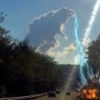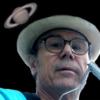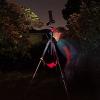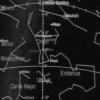I keep reading about the effect of CO (central obstruction)on planetary viewing (visual only) and I often read that the impact becomes significant at a CO above 30% of the aperture by diameter. I keep trying to visualize this impact and when I find information showing this, I can’t help but think that to an unexperienced observer, the impact is negligible. Take for example the simulation provided on this site:
http://www.beugungsb...iffraction.html
When I look at the difference between a non-obstructed scope and a 30% obstructed scope I can’t for the life me see a significant difference between the two. On the next site (below) I see the difference a bit more, but again not enough to make me spend thousand on a 6” unobstructed scope.
http://www.damianpea.../simulation.htm
I find this issue important for beginners such as myself since it’s easy to get carried away with trying to find that perfect instrument and spend thousands of dollars. Until the observer has gained enough experience to appreciate the difference in contrast, thousands of dollars may be spent only to be disappointed in the result. For a planetary specialist, I can understand how the differences in the above sites may be significant, but for a casual observer it may go unnoticed.
So my question to the seasoned observers is the following: Are the images shown on these sites a realistic representation of the effect of CO?
I also realize that seeing conditions come into play since these images assume perfect conditions. But that only reinforces the fact the any difference between a 30% CO scope and an unobstructed scope may go unnoticed to a casual observer.
Thank you for your time
Eric
Eric,
The most important factors for producing a sharp image are:
--collimation of the optics.
--cooling of the optics to near ambient temperature
--the conditions (seeing, especially, but also transparency)
--the quality of the optics
--the ability to attain a sharp focus with the eyepiece and focuser combo.
WAY down the list of important points would be the size of the central obstruction. I have personally looked through excellent and poor examples of every kind of telescope, and the excellent examples gave profoundly good images, regardless of the size of the obstruction.
It's why I always advocate choosing a secondary size in a reflector that is appropriate for deep sky use, even if a slightly smaller secondary might be usable for purely planetary observing. Because the observer will not see the difference, and deep sky viewing will be better with the slightly larger secondary.
I've used scopes with obstructions as large as 40% and seen excellent star images and great lunar images in the scope. Is it possible that another scope with a small (say, 18%) secondary and uber-expensive orthoscopic eyepieces (like ZAO-IIs) might reveal a tiny feature somewhat obscured in the scope with the larger secondary? Sure. Do I care? No. What matters to me is the presentation of a wide image with excellent sharpness, so I can watch that planet drift across a really wide field, staying in sharp focus all the way through. And so I can see the context around the deep-sky object.
People worry a lot about the CO of the scope because they read how bad it is to have one slightly larger when the difference in seeing from moment to moment has much more impact on the image quality. Sigh.
Well, we are a detail-oriented group of hardware geeks, I guess.
So, in answer to your question, if all other factors are equal, and they rarely are, then those images are reasonable simulations. But put the smaller secondary scope in a poorer seeing environment and the larger secondary scope in skies with better seeing, and the more-obstructed optics will perform better.
I see highly variable seeing where I observe. If you do too, concentrate on collimation and cooling of the optics and wait for better seeing. Observe more and you will see more. Regardless of the size of the secondary mirror.























